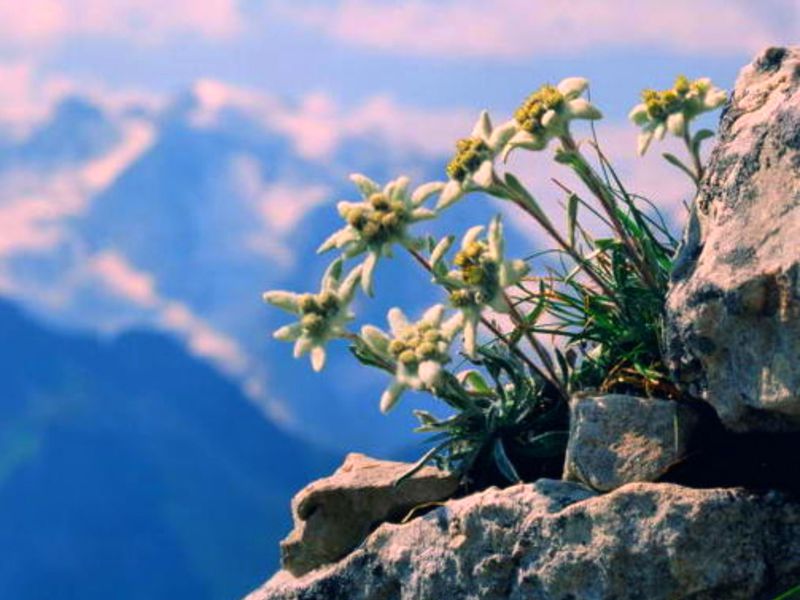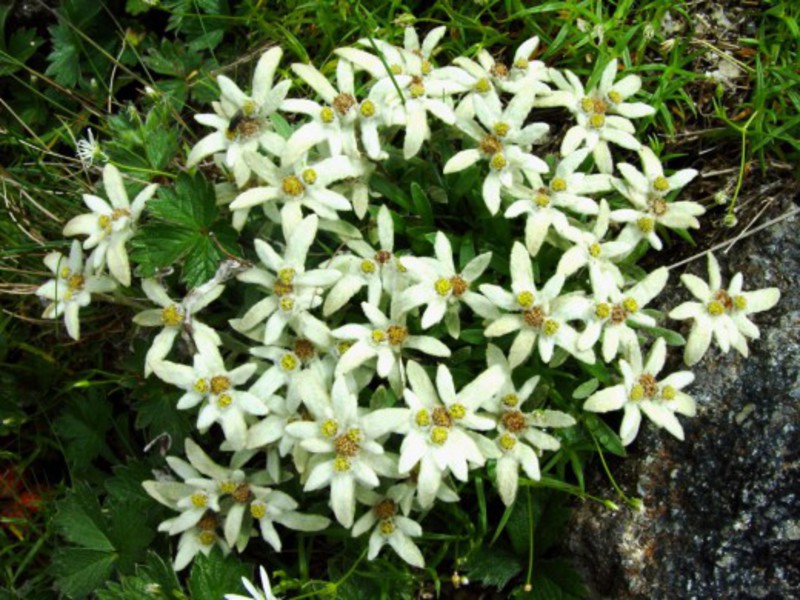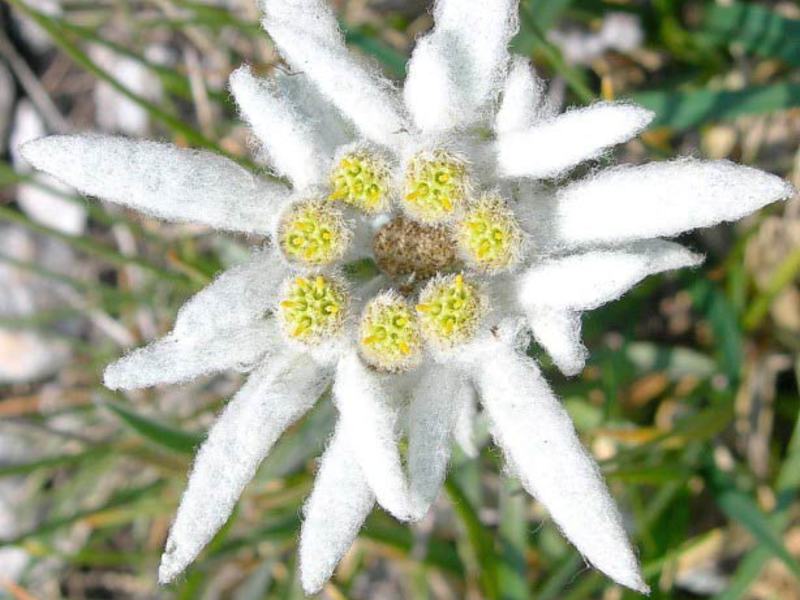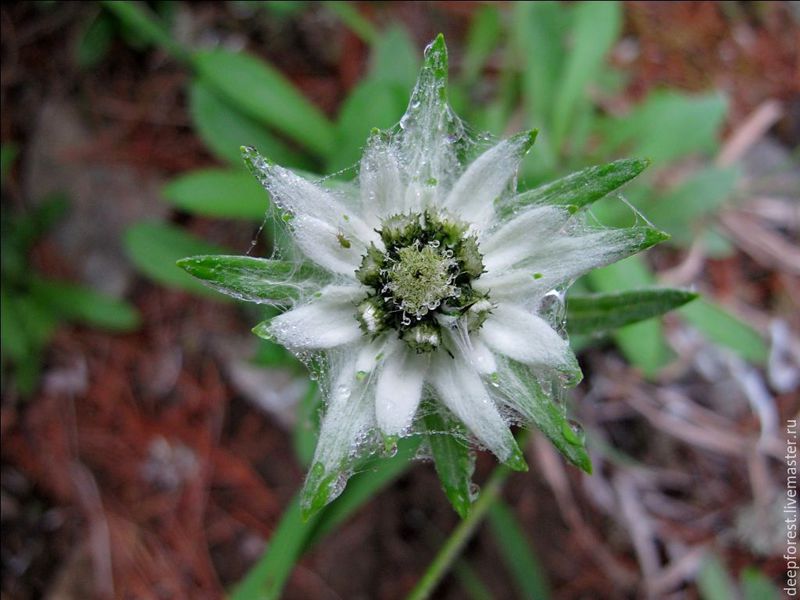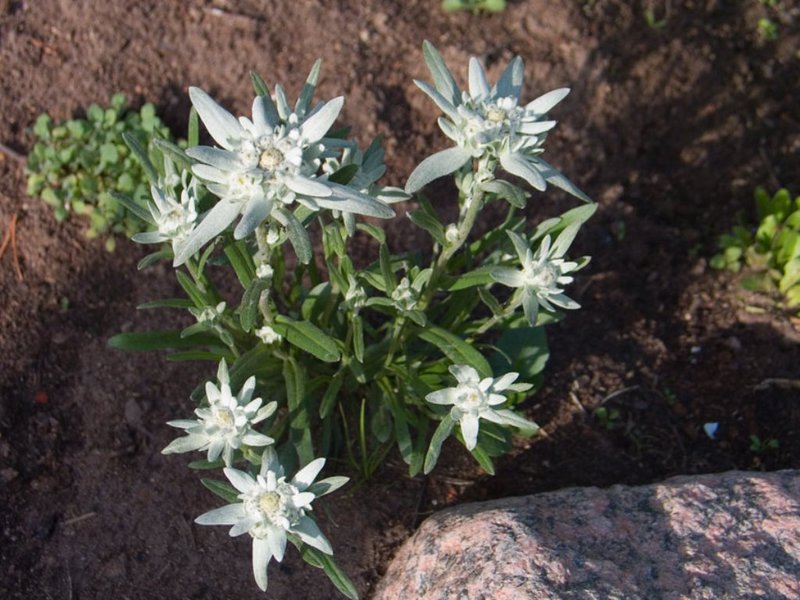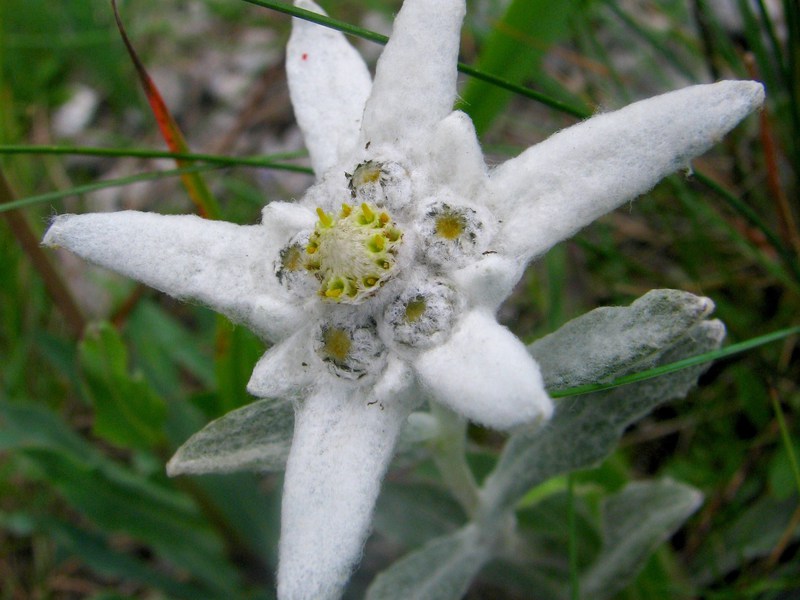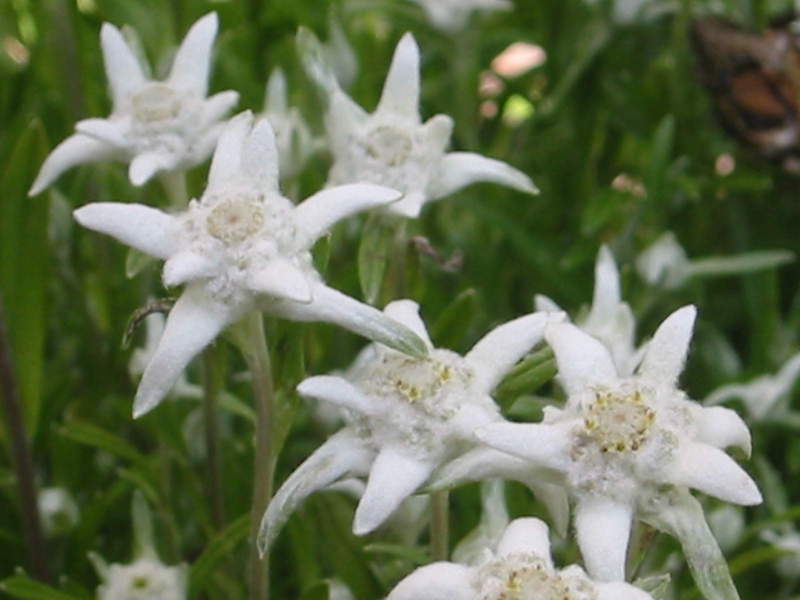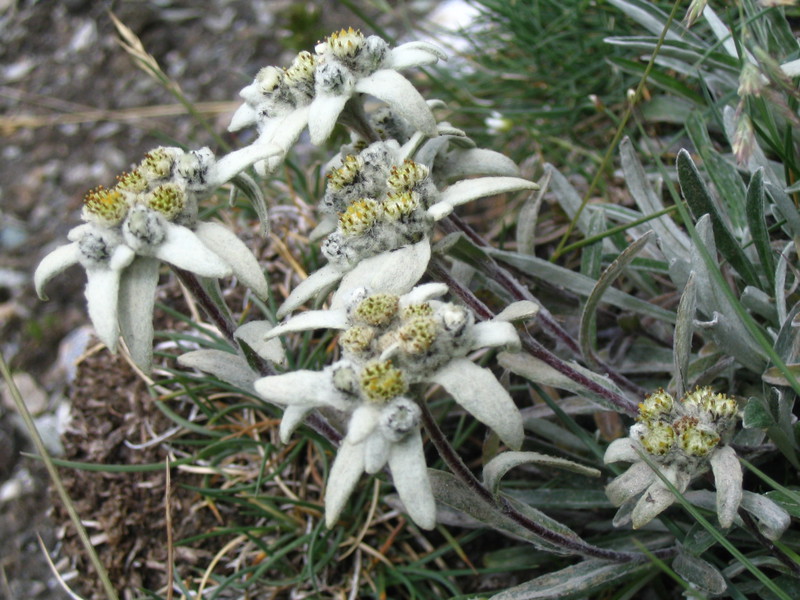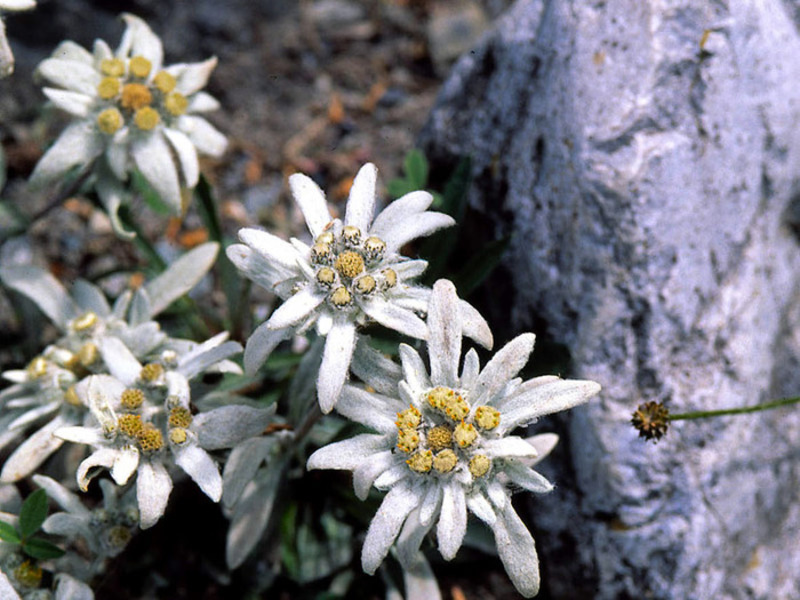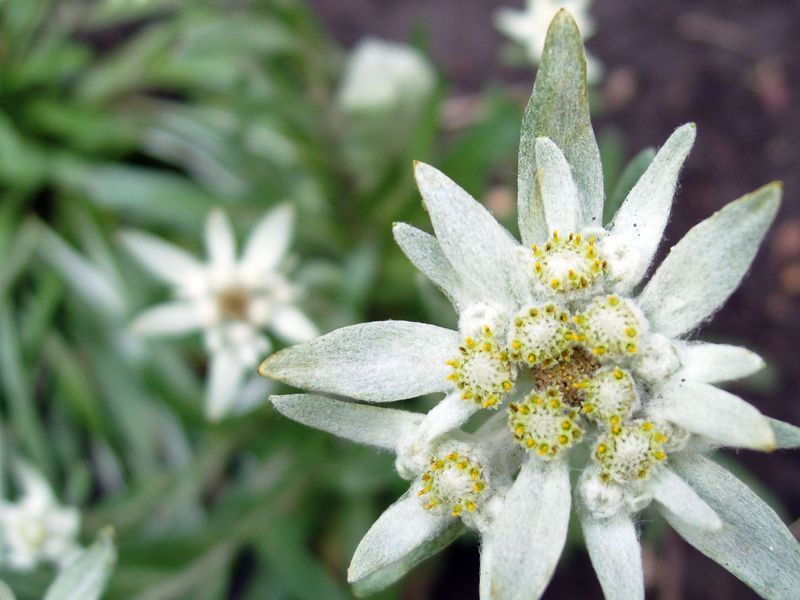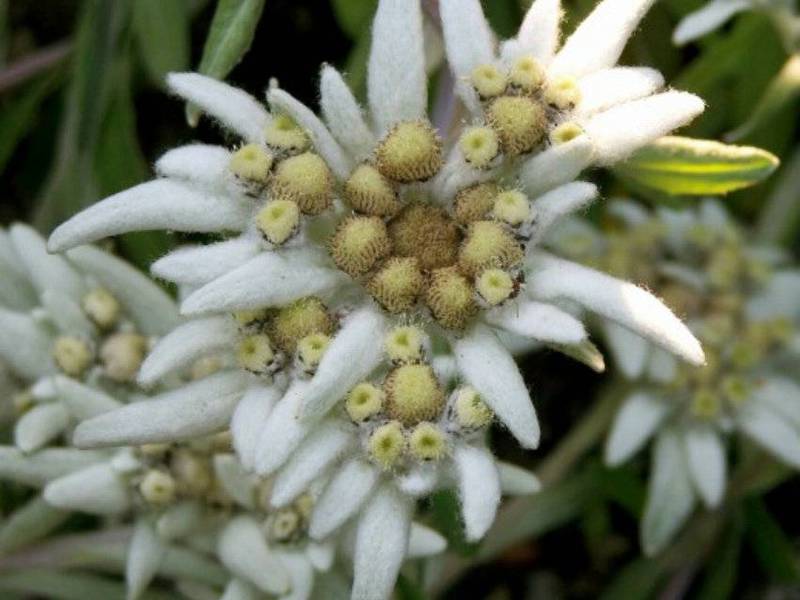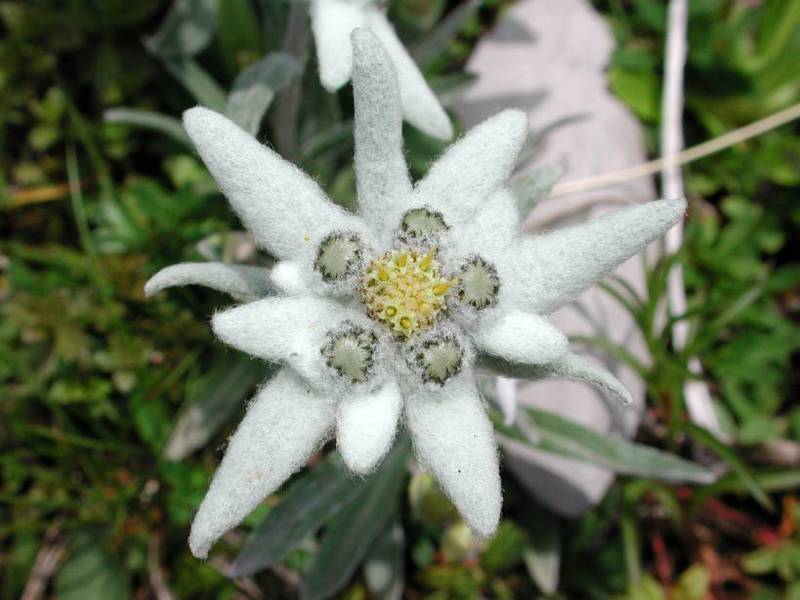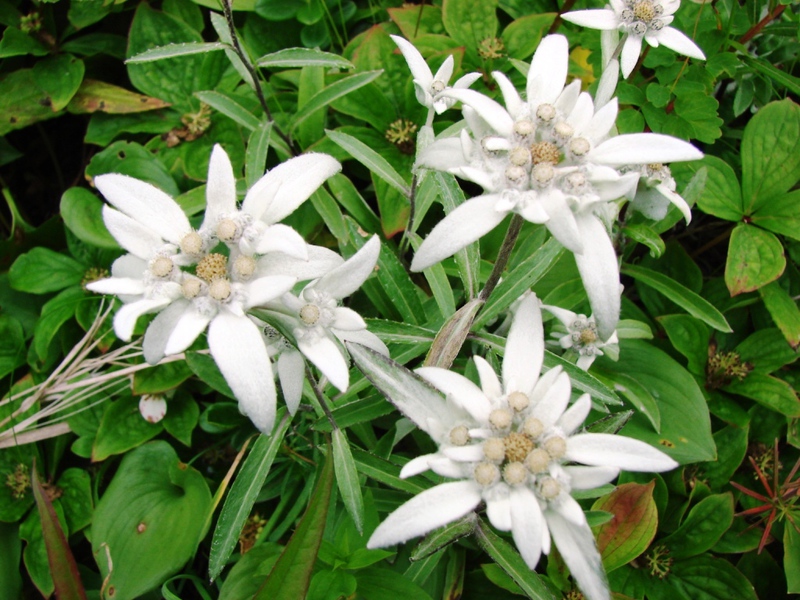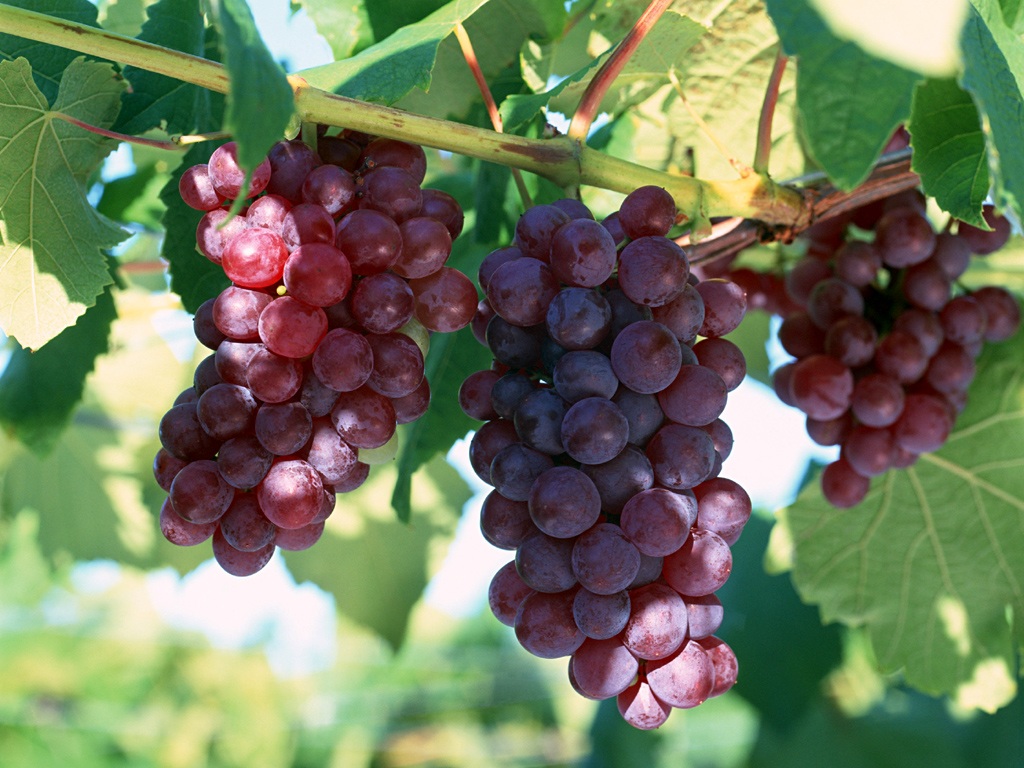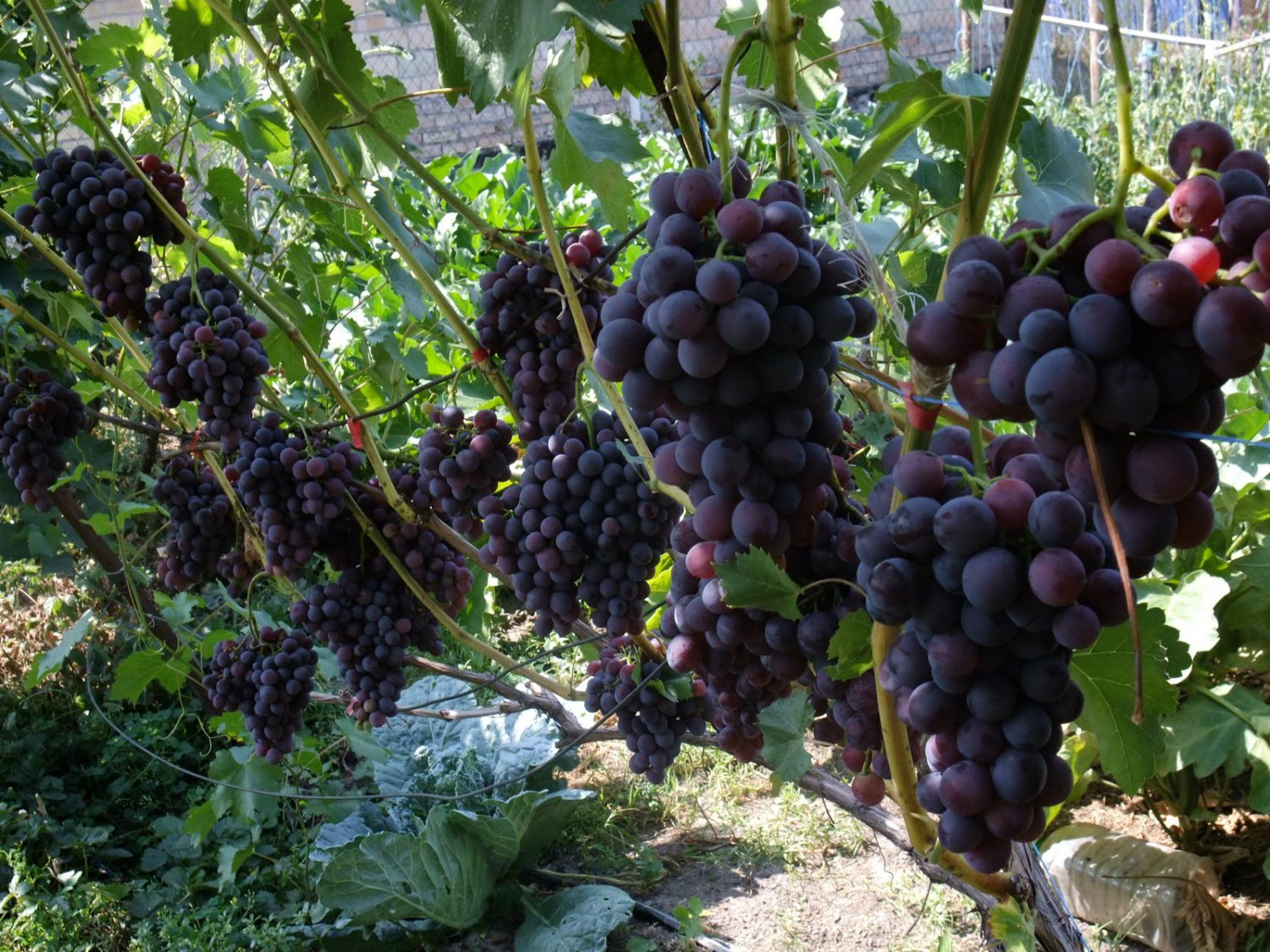Edelweiss (Leontopodium) or leontopodium is a genus of herbaceous plant of the Aster family.
Edelweiss is a word of German origin, meaning "noble white". The flower is shrouded in numerous legends about romantic love, secrets, it is considered a symbol of loyalty and devotion.
This small, beautiful flower is shrouded in many secrets. Even in ancient times he was considered a symbol of loyalty, love and courage... Men, risking their lives, procured this flower for their beloved high in the mountains.
In nature, the plant grows among rocks, rock fragments. More common in the Far East, as well as in the mountainous regions of the Himalayas, Carpathians, Tibet. Loves the burning rays of the sun.
Plant varieties
There are about 40 plant species, but only the following are widely used in floriculture:
- Alpine edelweiss. This is the most common variety. It has terry apical leaves that form a multi-rayed star. The stem reaches 20 centimeters in height. The plant blooms in the summer months.
- Edelweiss is edelweiss. It has stems up to 35 cm high, the leaves are sharp, linear, of a grayish-tomentose color, almost naked from above.
- Siberian edelweiss. This is a species close to alpine edelweiss.
- Edelweiss is pale yellow. It has single stems, often balding. Bracts are lanceolate and oblong with curled edges, yellowish-greenish in color.
- Kuril edelweiss. Squat flower, stems straight, reaching 20 cm in height. As you can see in the photo, the leaves forming the "star" are approximately equal in length, white-tomentose-pubescent on both sides, narrow-lanceolate.
In nature, edelweiss do not form large clusters. They are found most often:
- on limestone rocky slopes;
- in cracks and crevices of rocks;
- in hard-to-reach places they rise to the line of eternal snows.
Conditions for growing edelweiss
 The soil should be depleted, infertile, consisting of a large amount of coarse sand. But it should be perfectly permeable to moisture. Because plants do not tolerate stagnant water. That is why it cannot be planted in lowlands and depressions.
The soil should be depleted, infertile, consisting of a large amount of coarse sand. But it should be perfectly permeable to moisture. Because plants do not tolerate stagnant water. That is why it cannot be planted in lowlands and depressions.
It is imperative to add a little coarse sand and small pebbles to the soil. They will drain the soil as in nature. Edelweiss categorically does not tolerate mineral or organic fertilizers... Fresh manure is very harmful as a fertilizer. It is not advisable to disturb the plant with frequent root loosening.
It is better to plant it away from sunlight, in partial shade. The plant is not very demanding for watering, but in extreme heat it must be refreshed.
Growing edelweiss from seeds
The flower is propagated by seeds. The seeds of the plant are equipped with parachutes resembling dandelions and are very easily carried by the wind.
It is better to plant in the ground with seedlings. The seedling mixture should consist of garden soil, perlite and coarse sand. The seeds are scattered over the surface of the mixture without burying. The container is covered with glass or foil. It is necessary to open seedlings only after the emergence of seedlings. It is recommended to plant seedlings in open ground in April or early May.
The seeds can be sown directly into the ground, for example on an alpine slide. But the ground should already be warm enough.Seedlings of the plant grow for a very long time, sometimes up to two months. But they may appear within a week.
It is easy to determine whether a plant has taken root by the appearance of side shoots.
In July-August, the plant reaches 3 centimeters and already has 2-3 leaves. At this time, they should be cut out. The holes where the edelweiss grows must be deep. When planting in a hole, the roots are straightened and sprinkled with slightly dry earth. Further, abundant watering is required.
The flower will grow intensively and bush, next year it will bloom in late spring.
Grown plant bushes can be divided, but only with great care.
The plant must be planted away from creepers... They will suppress the growth of edelweiss with their root system. Because of this, he may even die. It is required to remove weeds on time.
Before the cold weather, it is recommended to mulch the flower with wood mulch or peat. The flower is hardy enough, but the mulch will keep the snow on top of the sleeping plant.
Edelweiss in garden design
 Flowers can stay in a vase of water for a long time. The dried plant retains its silvery color and shape. Looks great on rocky areas and in the foreground of mixborders.
Flowers can stay in a vase of water for a long time. The dried plant retains its silvery color and shape. Looks great on rocky areas and in the foreground of mixborders.
The flower goes well with violet, aquilegia, miniature roses, alpine aster. Because of this, it is in demand among designers of flower beds, alpine slides and rockeries. Edelweiss can be included in the composition of winter bouquets as a dried flower.
The flower is also combined with conifers, pink, blue and blue flowers. We must remember that this plant is modest. Therefore, you should not plant it near graceful garden plants. He'll just get lost among them. More it looks impressive in single landings.
Currently, in nature, the number of these flowers has significantly decreased. The alpine flower edelweiss is listed in the Red Book because it is on the verge of complete extinction.
